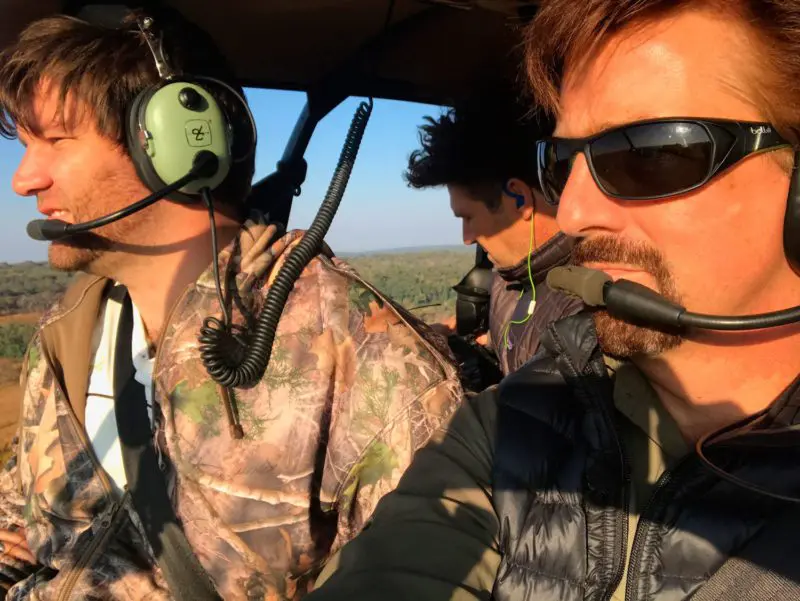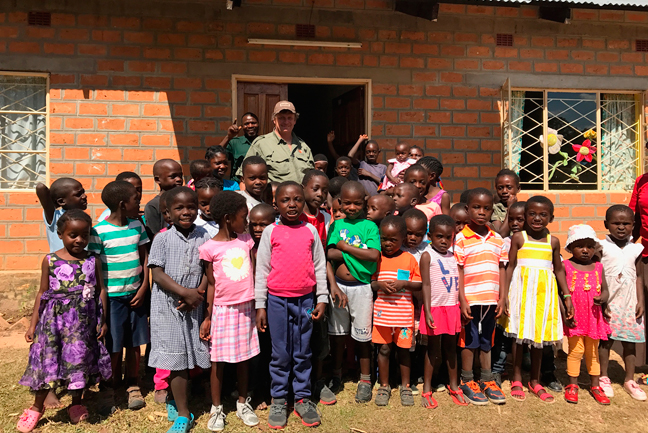African wildlife is in crisis and our war on poachers isn’t working. It will never work. Poaching is a symptom of a disease that will only be solved at its root—with and by the people of Africa. And the people of Africa will not care about wildlife until they have a reason to do so. No manner of North American or European benevolence, at the end of the day, will solve this problem. That is the fundamental truth that I have come to accept over a lifetime of witnessing the failures of the world that looks on in horror at scenes of gruesome wildlife destruction across the African continent.
I am the descendent of abolitionist missionaries who came to Zambia in the 1870s via Angola. My grandfather and father were cattlemen and traders, and over the many decades of trying to make a living converting the wild lands of Zambia to cattle pastures, we came to the realization that we were trying to make a living off the wrong animals.

Chris Dorsey and the author’s son, Chris Fisher, take an aerial survey of the Nchila Wildlife Preserve where hunting and conservation are one in the same.
Across Africa, there have been billions of dollars invested in trying to establish cattle programs. Native wildlife has been eradicated to make way for cattle that are simply not suited to living here.
When it comes to producing protein for native peoples, buffalo, hippo and the wide assortment of other game species are far more efficient and disease-resistant, and they do not turn the lands into deserts as do cattle.
So, in 1993, our family made a decision to take a new path forward and founded Nchila Wildlife Preserve, a natural laboratory of sorts that, through plenty of trial and error, has landed on a model that is transportable to many parts of Africa and beyond.
We started by embracing both the value of wildlife and the native communities that reside among our lands. We realized there was no future in viewing people as a threat to wildlife, but rather they must be the custodians of it. From buffalo to kudu and sable to warthogs, we have replenished these once sterile cattle lands with animals that were meant to be here. And these animals are now the currency by which we not only exist, but thrive in this part of Africa.
On our preserve, wild animals are flourishing because we have given them to the people of the communities to own and to manage, and that has transformed the story and future of wildlife in our region.
Many of what are labeled as “sustainable” wildlife programs have been tried in other parts of Africa, but most have failed because the local people never truly realized the benefits of having game, save for some opportunity to snare a meal or two. There typically has been no long-term strategy to improve the lives of the people through the wise use and management of wildlife; consequently, sustained conservation success has been elusive at best.
Subscribe today to read the full article. Wild Heritage By Pete Fisher.

